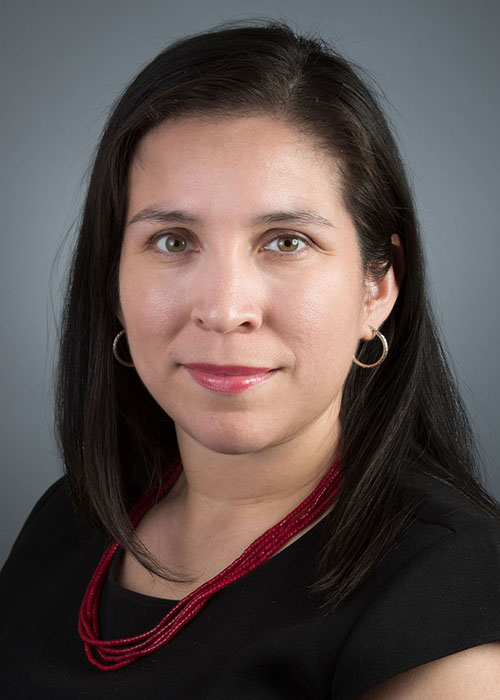
As a student, Ruth María López noticed the disparity among schools. While her own suffered from crowded classrooms and outdated facilities, others appeared flush with resources and funds.
The proud daughter of immigrants and a first-generation college student, López committed herself to promoting equity in education.
“I would hope my work wouldn’t be relevant in the future because we have more equity in schools, but right now, I still see an important role for myself in the classroom,” said López, an assistant professor of school leadership at the University of Houston College of Education.
López’s focus on equity and her encouragement of her students earned her a UH Teaching Excellence Award for 2020-21.
A former doctoral student, Madeleine Peery, said López was instrumental in her evolution from an educator afraid to speak her mind to a school administrator with the knowledge and courage to enact change.
“Dr. Ruth López is the pinnacle of instructional excellence that the University of Houston is known for,” Peery wrote in her nomination letter.
Learn more about López and her teaching approach in the Q&A.
Why did you become a professor?
I’ve always valued teaching. I have a memory of dressing up for career day as a teacher in elementary school. My mom is from El Salvador, and her godmother was a teacher, and her sisters, my two aunts, were teachers there. I kind of felt like this was an ode to the generation of teaching I came from. It felt like I belonged in the classroom and teaching.
What else drew you to teaching?
I’m really interested in contributing to educational equity. As a researcher and evaluator at Brown University for the Annenberg Institute for School Reform, I enjoyed the work I was doing, but I didn’t get to interact a lot with college students. So, that’s when it occurred to me that I wanted to be in the classroom, think with students, mentor them and make sense of issues they were interested in learning more about.
What do you love most about teaching?
Exposing my students to perspectives they never would have considered before. Making sense of the current context of their own roles in education when they learn about the past, inequality and inequities. So, what I like most about it is when they go back to their environment and ask, “What can I do differently now?”
What is your teaching philosophy?
I feel like everybody brings experiences and knowledge to the table and classroom. I’m not there to impose what I know on a group of people, especially in education. My philosophy is evaluating knowledge and experiences and seeing how we can learn and grow, creating spaces where people can be critically reflective.
How do you incorporate technology into your work?
I’ve always been a fan of technology, even when I was teaching face to face. I was that professor trying out different apps and fun ways to engage differently. Bringing technology into the classroom during the pandemic, I went with the philosophy “less is more.” I tried not to overwhelm my students, yet use the technology UH offered as best as possible. At the end of the day, I feel like my students are still connected with each other and myself through our classes on Microsoft Teams.
How has the pandemic affected your teaching?
Engagement has changed, so now I’m looking at chat. That’s going to be weird going back to face to face. Chat really works well for students that are less apt to speak up in class, but they still want to say something. So, I’m going to have to think about creative ways to engage them.
How do you connect with students?
I go out of my way to learn their names right away, to say their names how they want me to say it and to learn a little bit about them. I may say to a student, ‘Oh, this is right up your alley. You should really look at this author.’ When I do this kind of stuff, directly say something they’re aligned to or have a passion about, they see that I see them. There is no denying that I am the professor, and I have more power in the classroom, but at the same time I try to make myself relatable to them as much as possible.
Another way I relate, if something’s happening in the world, like after the killing of George Floyd, the pandemic, the winter storm, Hurricane Harvey, I make time in class to talk about these things, but I don’t force it on them if they’re not ready to share. Just holding space is sometimes what is needed.
What are your favorite assignments to teach?
I like to do a lot of assignments that help students do public speaking. These are educational leaders. One day, they might be superintendents, and their job is going to be getting in front of a camera and reassuring their community that even through a pandemic, for example, their children will continue to be safe. Communication is a big piece of my work. I also give assignments that help my students be critically reflective about their identity and their work. Often, students share that they find these exercises transformative and empowering.
What advice do you have for students?
Use your courses to step out of your comfort zone. A lot of the courses I teach are exposing students to issues that they have never encountered or read about. Use your college classes to really learn about very different perspectives or even different approaches to education.
— By Lillian Hoang